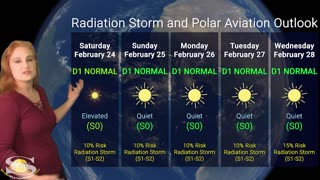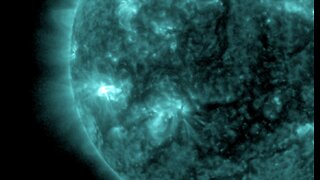Rip Current Science (Part 4)
This video shows amazing aerial footage of a real rip current as it forms off of the North Carolina coast. Watch to learn the science behind how a rip current forms, and how to survive if you're caught in one.
Transcript
NARRATOR:
You might have heard them referred to as “undertow” or “rip tides,” but these ocean phenomena are actually rip currents.
Rip currents are narrow currents in the surf zone that move quickly away from shore.
A typical rip current ranges from 50-100 feet wide, and can extend 100 yards or more offshore. It can reach speeds of over 5 miles per hour - that’s faster than an Olympic swimmer!
That makes them dangerous and potentially deadly, and scientists want to learn more about them so we can better forecast when and where they will form - and keep beachgoers safe.
Here’s what we know:
Waves don’t have to be huge for a rip current to form - two or three feet are all it takes.
And the weather doesn’t have to be bad for a rip current to emerge. They often occur in the nice days after a storm.
They’re usually strongest near low tide, but can form at any time.
Rip currents often form where sand bars are near the shore. They occur at breaks or channels in the bar.
They’re often difficult to see, but you can spot them in areas where waves aren’t breaking, or where there’s foam, seaweed, or discolored water being pulled offshore.
It’s easier to see a rip current from higher up - such as from the beach access over dunes or a lifeguard’s tower.
Rip currents are a hazard for beachgoers, but by knowing the dangers and what to look for, you can avoid being caught in the grip of the rip.
-
 2:56
2:56
Creative Society
4 months agoScientists Were Wrong: We Have Way Less Time Left
1.62K25 -
 5:53
5:53
Atomic Analyzer
2 months agoThe Science of Climate Change
651 -
 7:15
7:15
NextNewsNetwork
29 days agoBrace for Impact: Severe Space Weather Event Could Wreak Havoc on Modern Life, Warns NOAA
1.32K2 -
 17:46
17:46
Kitz's Corner
4 months agoElite Scientists STILL DON'T WANT US TO "DO OUR OWN RESEARCH"
26 -
 18:04
18:04
Current Events | From A Biblical View
6 months agoThe Science of Geoengineering | Current Events, The World We Live In
3682 -
 14:40
14:40
TamithaSkov
3 months agoThe Biggest X-flare Yet Shooting Blanks | Space Weather News 24 February 2024
20 -
 3:23
3:23
Space Weather News
7 months agoSolar Storms Beginning, More Impacts On the Way, Top News | S0 News Nov.5.2023
2.44K5 -
 2:56
2:56
WillyLongWood
5 months agoSolar Storms, Magnetic Fields and Life | S0 News Dec.18.2023
20 -
 45:45
45:45
Grimerica Outlawed podcast content
27 days agoClimate Change Grift, Geo-engineering and Counter Science
3721 -
 1:05:17
1:05:17
TheWarAgainstYou
1 month agoControversial Experiment Inserts Aerosol Particles Into Sky to Fight Climate Change. Crossroads
6.69K32